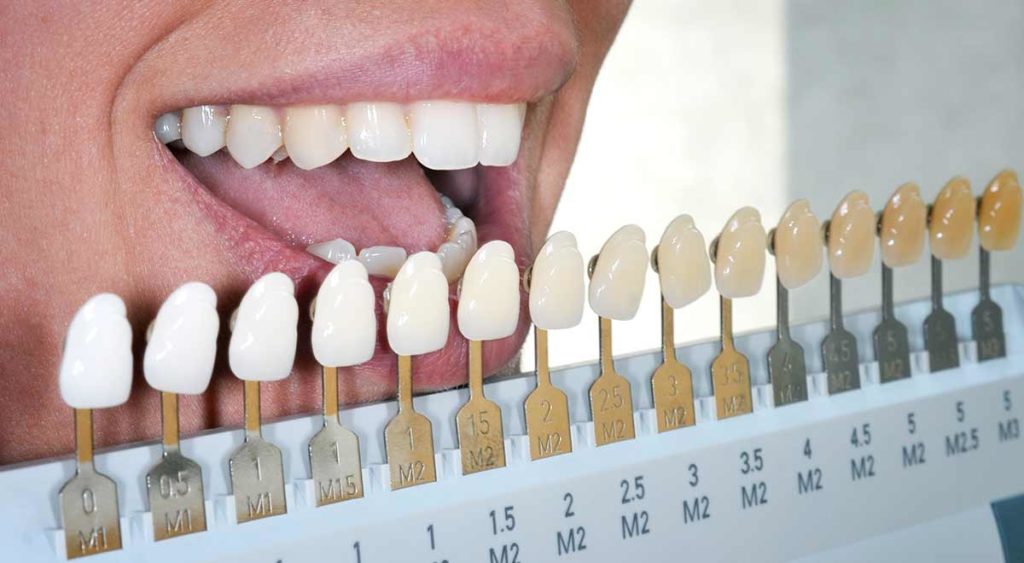As we’ve been focusing on teeth whitening quite a lot recently, we thought we’d dive into a few on-going myths and untruths. Research suggests that most people aren’t nearly as clued-up about teeth whitening as they think they are – primarily due to the kinds of long-standing myths laid out below.
So if you’re targeting a brighter smile and would prefer to get the job done properly, give the following 10 teeth whitening myths a read and familiarise yourself with the facts right now:
Myth 1: Whitening toothpaste is a budget-friendly alternative
First of all, only half of this particular sentence is true. While it’s certainly cheaper to stick with toothpastes, even the very best whitening toothpaste on the market isn’t going to make a big difference. The reason being that whitening pastes and whitening mouthwash alike are simply not designed to penetrate the surface of the teeth and get to work on the stains that result in discolouration. Instead, they simply help remove and prevent surface stains, which all on its own doesn’t lead to a visible difference.
Myth 2: Only the most expensive professional treatments work
While it’s true to say that the best results can always be had from professional treatments, DIY teeth whitening kits have come a long way. To such an extent in fact that the gap between professional results and DIY results is getting smaller all the time. And when considering the fact that the latter might set you back 90% less than a single professional treatment, it could work out much better long-term value for money.
Myth 3: If you have sensitive teeth, whitening isn’t for you
There are certain teeth whitening kits, products and approaches out there that can be extremely uncomfortable for those with sensitive teeth. Agony, in fact. Then again, there are also kits and treatments that have been designed specifically for people with sensitive teeth, which cause absolutely no pain or discomfort whatsoever.
Myth 4: Teeth whitening is bad for enamel
In this instance, it depends entirely on the specific teeth whitening products you use and how you use them. Used appropriately, high quality whitening products simply open the pores of the teeth, get to work on stains and subsequently allow the pores to close once again. By contrast, low-grade teeth whitening kits sometimes use the kinds of harsh chemicals that really can do a number on the health of your teeth.
Myth 5: The lasers used by professional dentists are dangerous
This is entirely incorrect for one pretty simple reason – it’s not a laser! Even though it’s often referred to as a laser, it’s actually an LED or UV light that’s designed to activate the products used to remove stains and whiten teeth. As such, dangerous it most certainly isn’t!
Myth 6: You need to permanently avoid coffee and red wine
Not necessarily – it all depends on what you do before, during and afterwards. For example, some of the best teeth whitening toothpastes and mouthwashes on the market leave behind active defences to help prevent stains from setting in. Likewise, chewing gum or using mouthwash after eating or drinking anything stain-heavy can help prevent stains setting in. Or if you simply drink through a straw, there’s no need for it to come into contact with your teeth in the first place.
Myth 7: Anyone can whiten their teeth
Unfortunately, given the way in which each and every human being is fundamentally unique, there’s no such thing as an approach to teeth whitening that is comprehensively effective. It’s usually possible to at least make a slight difference to overall whiteness, but there’s always the chance that any given approach simply will not work. Particularly, those who have any kinds of existing dental health problems should proceed with extreme caution and only under the direct supervision of a dental health professional.
Myth 8: Teeth that are whitened artificially look artificial
True, but only if you get carried away with a DIY whitening kit and choose to ignore the instructions. Contrary to popular belief, it’s actually quite difficult to end up with the kind of smile that literally glows in the dark. Particularly in the cases of the highest quality kits and products on the market, which are designed to take things so far and no further.
Myth 9: You can whiten fillings and crowns
Unfortunately, even the most outstanding DIY whitening kits and products on the market are simply not capable of whitening crowns, fillings and veneers. Which is why it is a good idea to take into account the exact colour/shade of things like dental implants before whitening your teeth, given the way in which you may end up with a noticeable discrepancy between the colour of the implant and the rest of your teeth. If in any doubt, your dentist can offer you all the advice and support you need.
Myth 10: Whitening is permanent
Last but not least, no matter what lengths you go to when it comes to teeth whitening, the result will only ever be temporary. That said, you can certainly make a significant difference to how long your gleaming white smile sticks around for, by using the very best whitening toothpastes, mouthwashes and related accessories available. Dentists usually recommend that whitening treatments should be topped up every six months or so, but this will vary significantly in accordance with what you eat and drink, whether you smoke, how you look after your teeth, what kind of whitening process was used in the first place and so on. Nevertheless, it’s best not to get your hopes up in the expectation of a permanent solution – no such solution currently exists!
